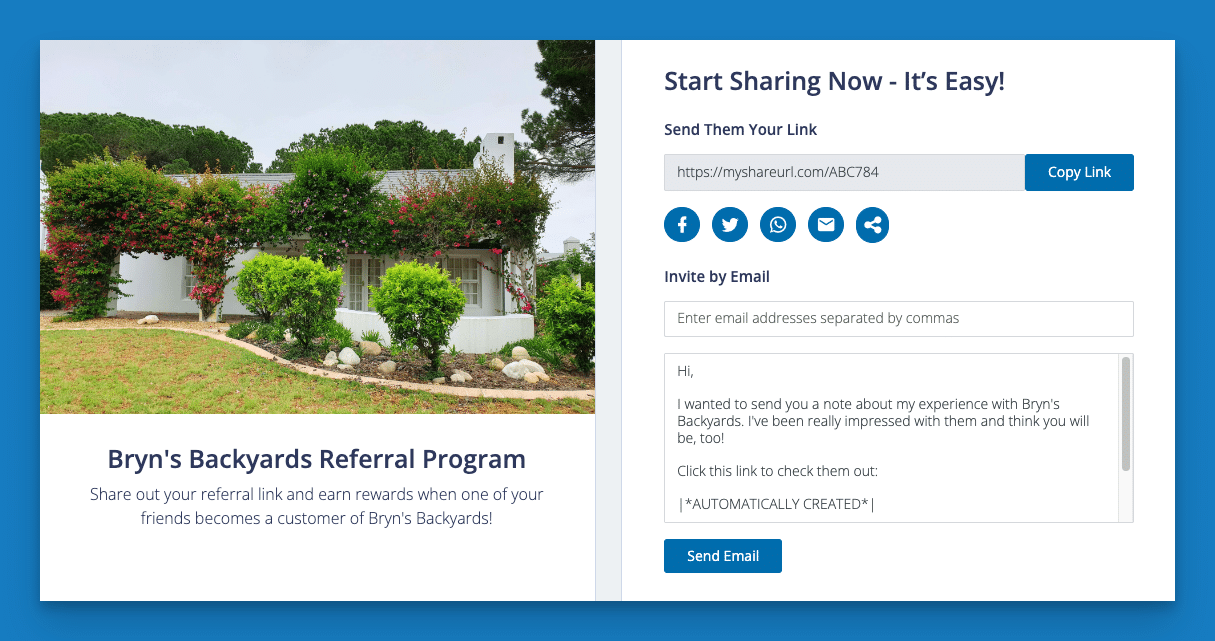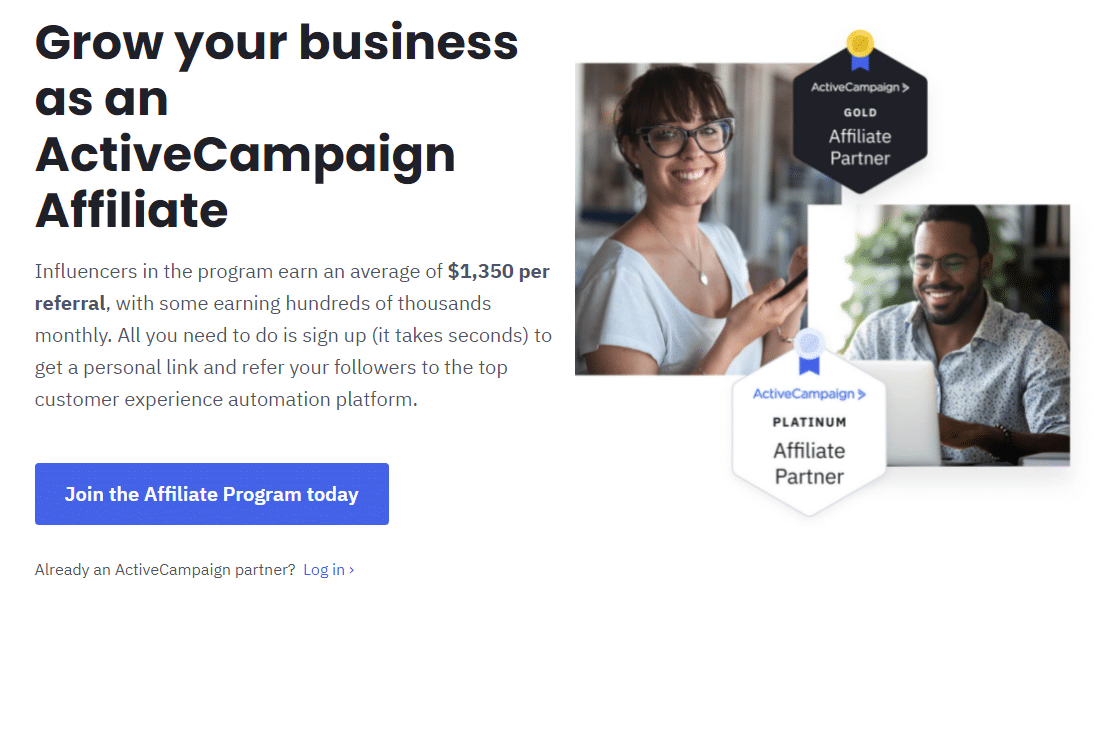One of the biggest challenges services-based businesses struggle with is getting a consistent flow of customers, especially repeat buyers.
Unlike product-based businesses, where there is a clear exchange of ownership of a tangible product, the offerings of services-based businesses are intangible and not as easy to define. Therefore, service business owners have to find unique ways to market what they do and grow their customer base.
In this article, we discuss effective marketing strategies for services to drive growth. We start with the foundational aspects of marketing that are necessary to build a strong base. We then look at the Holy Grail of service marketing – the 7Ps. Finally, we cover next-level growth strategies to scale up.
By the time you reach the end of this article, you’ll have a 360-degree view of the nuts and bolts of running effective marketing strategies that will drive expansion for your business.
What sets service marketing apart?
When you’re marketing a service, you’re trying to convince people to spend money on something they don’t tangibly own, whether that’s a software subscription, repair, installation, or other service you provide. The quality of your customer service matters even more, because that’s an integral part of what your customers are paying for. The better customer experience always wins!
Customers are buying your service to achieve an end result with your help. They’re purchasing based on the value they expect. You don’t just process a transaction and move on – there’s lots of care and assistance involved, especially if the service is recurring
Trust is a massive factor in whether people sign a contract with you, so leveraging trusted peer recommendations can go a long way in showing the value you bring.
Who will these strategies work for?
The strategies below will work for all service businesses, including:
- SaaS
- Home repairs
- Landscaping
- Plumbing
- HVAC
- Law firms
- Coaching services
- Consulting services
- Tax services/accounting firms
- Banks/financial services
Without further ado, let’s jump in. We’ll start with a deep dive into what you need to do even before you think about marketing.
Core pillars of service marketing: Laying the foundation
It’s easy to get swept away by the promise of marketing to elevate your brand’s visibility and grow your customer base on autopilot. But marketing won’t be able to help you if your product is sub-par and your customer service isn’t up to scratch. More importantly, it won’t help you if you don’t have a clear idea of what your brand represents and how your services can benefit your customers.
So, before you proceed to develop a marketing plan, ensure you cover the following:
Establish your brand identity and values
Your brand identity is the personality of your brand and what sets it apart from competitors. It encompasses the service you’re offering, how you communicate the value of your service to your customers, and, ultimately, the emotions that customers feel when they engage with your brand. Values, on the other hand, are ‘ideals’ that guide the way your brand functions.
For example, New York-based florist Julia Testa’s brand is synonymous with events, installations, and flower delivery. The brand espouses the values of reliability, quality, and inspiration (in the “uncanny ability to capture other people’s vision and bring it to life”).
Showcase how you solve your ideal customer’s needs
This aspect boils down to highlighting the specific ways you can solve your ideal customer’s needs. Identifying your ideal customer’s pain points is a good starting point for creating targeted services that help solve those specific problems.
For example, Gabriel’s Tree Services and Landscaping in Los Angeles, is very clear about who they serve. Their website lists four core categories of services with detailed explanations of what each category covers — tree services (trimming, thinning, pruning, shaping, planting, etc.), tree removal (inclusive of stump removal services), landscaping (lawn maintenance and installation, irrigation and erosion management, etc.), and demolition services for residential and commercial property.
Know what sets you apart from competitors – and highlight that in your experience
Identify key differentiators that make you stand out in your service industry. The more aligned they are to what customers are looking for, the more appealing your differentiators will be.
SpinZone Laundry in Texas distinguishes itself based on how it caters to customer pain points, needs, and expectations from a laundry service.
Specifically in relation to its self-service laundry option, the business offers a long list of features, including cleanliness, good lighting, numerous payment options, air conditioning as well as heating year-round, well-maintained top-of-the-line equipment, televisions, snack and beverage machines, and even coffee and doughnuts during the morning hours.
Prioritize customer service
Customer service is critical to standing out as a service-based business, especially amongst other local businesses. Customers are more likely to give repeat business to companies that prioritize their needs and ensure that any difficulties they have are addressed promptly to their satisfaction.
Aim to provide stellar customer service in addition to providing attractive “product” services, and you’ll have no shortage of new customers, or loyal ones!
ProBooks NY is a popular service business that provides professional bookkeeping services. Judging by its online reviews, it’s apparent that much of the service’s popularity is due to how well the company looks after its clients. Reviews repeatedly reference their care for clients, responsiveness, expertise, friendliness, and ‘exceptional’ service.
Personalize customers’ experiences
A much-ignored aspect of services-based business marketing is personalization. And yet, personalization can be your best friend if you’re serious about maintaining a steady base of repeat clients, who will also refer you to other potential clients.
You don’t need expensive technology to personalize experiences for your customers. The following strategies cost little but are highly effective when you look at the big picture over the long term:
- Use the customer’s name and train your staff to use the names without prompting for regular customers.
- Collect information like birthdays and flag these for gifts, emails, or discounts to reward your customers on their special day.
- Adapt your services to your client’s unique needs. Pay close attention to your client’s pain points and ensure your services are built around their needs, as opposed to providing a one-size-fits-all solution.
Clearly communicate with customers
Communication is a critical component of customer service. Communication that’s prompt and relevant is key to ensuring customers are happy and will continue to use your services. It also goes a long way toward establishing trust and building credibility. Effective communication for a services-based business entails the following:
Transparency — Ensure clarity in terms of pricing, so there are no hidden fees or surcharges that may surprise the customer. Make sure any refund policies are clearly laid out. The prices for services should be mentioned upfront, along with the specific details of what’s included.
Think about aspects customers need to know, such as how they can reach you in a service emergency, what times you are available to communicate, and so forth.
Promptness – Address complaints promptly, get back to customers when you say you will, and be sure to notify customers of any potential delays or setbacks.
Feedback loop – Provide opportunities to customers for sharing honest feedback (feedback cards, online surveys etc.). Assess the feedback for validity and identify areas for improvement. It’s important to actually work on fixing concerns promptly and ensuring that your customer sees how sincere you are about it.
Find your core referral network (the people most likely to refer you)
Create a database of customers who will form your core referral network – these are the people who are most likely to refer you based on positive experiences of your service.
People who keep using your service because they love it, people who’ve shared positive feedback about your brand with others or online, and people who keep rating you consistently high in feedback surveys are all examples of customers who could potentially develop into referrals.
Building a core referral network should be seen as an ongoing process, not a one-time set-and-forget system. Referrals bring in more customers, who, in turn, will refer you to their own networks, and so on. The cycle continues!
Using the 7 Ps of service marketing: Growing your business
Once you’ve established the foundational best practices to ensure your business is primed and ready to grow, the next step is to put the 7 Ps of Service Marketing into practice.
The earliest reference we have to any Ps at all is the seminal work Basic Marketing by E. Jerome McCarthy and William D. Perreault, Jr., first published in 1960. To understand the concept of the 7 Ps better, let’s refer to how the authors originally defined a marketing strategy:
“A marketing strategy specifies a target market and a related marketing mix. It’s a ‘big picture’ of what a firm will do in some market. Two interrelated parts are needed:
- A target market – a fairly homogeneous (similar) group of customers to which the company wishes to appeal.
- A marketing mix – the controllable variables the company puts together to target this group. “
The typical marketing mix outlined by McCarthy and Perreault, Jr. consisted of Product, Price, Place, and Promotion. Later in the 80s, B.H. Booms and M.J. Bitner refined this mix further by adding additional Ps in the form of People, Process, and Physical Evidence.
Up next, we’ll take a closer look at each of these and discuss how to execute them successfully for service marketing business models:
1. Product
Product simply means developing the right product for the market, in this case, the right service. Creating the right service offering involves researching your customer’s biggest pain points and identifying how to position the service, so it looks like the best possible option or solution for them.
From the perspective of marketing, you should be able to communicate the value of the service, highlighting how its features can solve your target customer’s problems.
Consider customization options, design elements wherever they apply to your business, and the overall quality of the service. Also develop ‘package’ options where you provide discounts or additional benefits when customers sign up for a long-term commitment.
Example: Consider a Personal Trainer (PT) whose core service is personal one-to-one training sessions for clients in the privacy and comfort of their homes.
The service is ideal for a target market whose pain points include not having time to commute, not wanting to dress up to go to the gym, not wanting to work out in groups, and not having personal guidance for optimal results. The PT provides a trial, individual sessions, and monthly or yearly package sessions to account for different needs. He also offers considerable flexibility in terms of timings.
2. Price
Price refers to setting the right price for the market. To arrive at the right price, find a good balance between covering the costs of running your services and providing a price that potential customers will find enticing enough to want to commit. You also want to make profit at the end of the day!
Review what competitors are doing in the same niche in terms of value proposition vs price to identify where you can provide additional value or better pricing. Remember that customers will expect premium service for premium prices.
Example: Netflix’s subscription plans showcase how a subscription-based service can be categorized into tiers offering varying levels of convenience, such as the ability to watch without ads, better streaming quality, the number of devices supported, and so on.
3. Place
Place, from the perspective of service marketing, refers to the mode by which you will deliver your service. In most cases, there’s usually a physical location as well as an online website.
Ideally have your physical location within easy access for customers most likely to buy from you. Speaking of access, how easy is your office to find and travel to? Is there adequate car parking available? Are the interiors of your office clean, tidy, and set up to provide your customer with a comfortable experience?
A website functions as your online location. Optimize your website, so that customers who visit it understand who you are, what you do, and how you can benefit them within a few seconds of landing on the home page. Ensure your website is optimized for all types of devices, including mobile.
Example: WhatsApp Business is a great tool for creating positive first impressions with your customers. You can use the automation features to provide instant responses, get appointments booked, and even track and label conversations. Set up your profile, integrate with your CRM or ecommerce platform, and you’re good to go!
4. Promotion
Promotion covers all the types of marketing tactics carried out for the purpose of promoting your business. Aside from posting ads in physical locations and doing events to drum up interest, it’s also necessary to engage in some form of digital marketing strategy.
In terms of digital marketing, look at a mix of both organic and paid options for the best results. Organic marketing (inbound marketing) comprises strategies like blogging, social media posting via Facebook, Instagram, or LinkedIn, and SEO or search engine optimization to draw customers to you.
With paid marketing (outbound marketing), you’re paying for ads to place your content or service in front of new customers – think Google Ads, Facebook Ads, or sponsored ads on YouTube or TV channels. When doing ads, ensure you have goals in place, whether that’s increased visibility or sales and metrics to measure your ROI.
5. People
The 5th P is about the People associated with your service company, both you and your team members. Aspects like friendliness, expertise, knowledge, good communication skills, responsiveness, and customer service orientation matter a great deal in the service industry, regardless of the size of your business.
Ensure your staff are adequately trained about the services on offer and how to engage with customers effectively. Customer satisfaction, trust, and credibility are critical to staying relevant when running a services-based business.
6. Process
With Process, you’re looking at the mechanics of how your service is being delivered to the end-customer and their experience of it. Processes should be as simple as possible for your customer. ‘Process’ becomes even more critical when you have multiple team members. Share best practices and consistently implemented workflows so your team members are all following the same process when engaging with customers.
Deploy technology as much as possible to make the engagement experience seamless for your customer.
Example: You can organize an onboarding questionnaire to go out immediately after a customer purchases your social media management package through your CRM software. Set up integration so different systems are connected and speak to each other limiting friction for the customer – they don’t have to sign in and out of multiple systems to work with you.
7. Physical evidence
Physical evidence here, refers to tangible evidence that your business exists, and more importantly, proof of purchases and services that your customer has bought.
While a physical location can be seen as physical evidence; for remote businesses, physical evidence can include aspects like having a website, a social media presence, e-business cards, brochures that you can send online, receipts for purchases, contracts, and the like. They count towards trust and credibility.
Another important aspect of a service business that can be categorized as physical evidence is customer reviews and testimonials. They provide proof that your business exists and that your service is as advertised.
Top 10 service marketing strategies: Scaling for next-level growth
Once you’ve established a solid business that’s consistently generating sales, repeat sales, and ample positive customer reviews, it’s time to scale. By scaling, you’re looking at growing your business exponentially by expanding your capabilities to take on more customers simultaneously.
Start a referral program
A referral program is a formal program to spread the word about your business through referrals, typically represented by your most enthusiastic and loyal customers. While customers may organically share positive experiences about your brand, throwing incentives into the mix can motivate customers to do more. It’s like having your own company referral network.
Potential buyers consider peer reviews and referrals a more trustworthy source of authentic reviews for service businesses. The reason is simple — peers are people just like them, unlike brand advertising, which is seen to be primarily driven by profit.
Referrals ultimately grow trust and credibility in your brand while helping to expand your prospect pool. They also contribute toward building brand awareness.
The fact that referral programs reward both the referring customer and the new customer, adds to their appeal. Existing customers are motivated to make referrals, while newly referred customers proceed to buy with confidence.
In terms of rewards, look at cash and gift cards, as these have proven to be the most popular, given how flexible they are in terms of what you can buy. You can also add in service credits/discounts that tie back to your offerings, if the customers are using your service on a recurring/subscription basis. New customers could receive a reward that ties back to your services, such as credits or an upgrade – but a gift card works well for them, too
Build message templates that existing customers can personalize and send to their peers. Providing a message (from the existing customer’s perspective) that the existing customer can send reinforces the personal recommendation factor and further promotes trust.
After you develop your referral program, make sure you’re regularly promoting it, so customers have your brand always at the top of their minds.
The easiest way to deploy a referral program is to use purpose-built software like Referral Rock rather than building one from scratch on your own. Referral Rock creates trackable referral links, lets you pay out rewards automatically, and makes the process of positive sharing easier for everyone involved.

Recruit affiliates
The next strategy to implement is to recruit affiliates, ideally by way of a formal affiliate program. Affiliates function as promotional partners. You give them a unique trackable link, called an affiliate link, which they embed in their content (blogs, videos, webinars, podcasts, etc.). The link, when clicked, directs the clicker to your website or landing pages.
Affiliates earn commissions every time a new customer clicks the link, gets directed to your site, and proceeds to make a purchase.
Affiliate programs work especially well for SaaS, financial services, and coaching/consulting services. Affiliate programs are very similar to referral programs in that they promote trust and credibility because the promoters are seen as peers (people just like a prospective customer).
Find ambassadors
Ambassadors are a third form of promotional partner to consider for growing your business, again most effective through the creation of a formal brand ambassador program.
Ambassadors are long-term promoters who have previous experience using your services. They love what you do, and keep sharing positively about how they’ve personally benefited from your services.
Like affiliate partners, ambassadors share a link to your website in return for rewards, and earn those rewards when their recommendations result in purchases. But ambassadors are different from affiliates in that they don’t have to be rewarded with cash (you could give them gift cards, service credits, or tangible gifts instead). Ambassadors are always familiar with your brand, so their recommendations are real and trusted.
Ambassadors usually have a solid fan following who trust their recommendations, and therefore, don’t need aggressive marketing tactics to be convinced. They’re happy to follow the lead of the ambassador.
Ask customers to leave reviews
A customer review is one of the most powerful marketing tools you can have at your disposal to increase your customer base. They authenticate your brand’s credibility online.
How do you go about asking for reviews? Follow these expert tips:
- Ask at the right time, when your customer is most likely to agree to a review – This can be shortly after a purchase, especially a repeat purchase; after providing stellar customer service, or when they’ve just shared positively about your brand, unprompted, on social media. It can be after the customer has referred someone else to you, or even after receiving a happy feedback/sentiment score.
- Optimize prime real estate in the form of popular review sites – Ask customers to leave reviews on popular and well-known review sites as this helps increase brand awareness, driving more customers to learn more about you.
- Activate all your active marketing channels to communicate your request – Consider one-to-one conversations, phone calls, text messaging, email marketing sequences, or even prompts on your website or post a purchase.
Gather customer testimonials (a step beyond reviews)
Asking for a customer testimonial goes one step beyond asking for a review. The idea behind collecting testimonials is to gather them and place them prominently on assets that are highly visible and generate traffic for your services.
You can adopt the same tips we shared earlier for customer testimonials. Showcase the testimonials on your marketing collateral, say brochures, leaflets, or packaged services. You can also display them on a dedicated testimonial page on your website.
Create videos showing customer successes
Video testimonials are a powerful way to showcase your brand’s strengths on social media. Research suggests that video testimonials can drive conversion rates up to 80% higher than written testimonials – they’re just seen as more credible, given you can see a real person talk positively about the brand.
Create community with social media
Creating a community makes customers feel like they’re part of a collective whole. Given most people are social beings, there is an innate desire to feel like part of a homogenous group, in this case, a community centered around your brand and what it does for your most loyal customers.
While you should post useful content regularly and consistently, you also want to make sure you’re engaging with members who have questions and comments. Also, reward and highlight people who make spontaneous reviews or share positive experiences and testimonials.
Send out a compelling newsletter
Email marketing is another one of those must-have marketing tools to adopt if you’re serious about growing your brand. People on your mailing list will have already shown some interest in either learning more about your work or buying a service from you.
The idea is to encourage repeat purchases or purchases of higher-tier level services through the sharing of valuable content that positions you as an expert who can solve all their pressing problems.
You can also use email marketing to send updates about your services, answer specific questions that customers may have, redirect to other useful content, or showcase reviews and testimonials.
Use content marketing to build trust and expertise
Email marketing is just one part of an entire system of leveraging content to advertise your services, also called content marketing.
There are multiple avenues you can use to grow your brand through posting helpful, useful, and valuable content, such as your blog, social media platforms, and online forums like Reddit and Quora.
Specifically, answer questions people have about your niche, and share expert insights on niche topics to build trust (for instance, if you’re a landscaper, you might blog about fall lawn care tips or when to seed a lawn).
Don’t forget to add keywords relevant to your niche or service industry to improve your content’s visibility so more people can find it.
Create strategic lead magnets
You can also deploy lead magnets as part of your overall content marketing strategy. Lead magnets are freebies given in exchange for customer information, such as ebooks, guides, courses, downloads, newsletters, and so on.
Focus on the specific topics that address the pain points of your customers in your content, to maximize the potential of obtaining the customer information which, in turn, can be used for email marketing.
Ideally, customize different lead magnets for different customer segments, as not all customers are at the same stage in the customer journey. Some may be just looking around, while others may have a little more interest in what you do or may be considering making a purchase.
Market your service the right way
Successful marketing for service-based businesses requires laying a strong foundation by establishing a clear brand identity, understanding your ideal customer’s needs, highlighting your differentiators, prioritizing excellent customer service, and personalizing experiences. Implement the 7 Ps of service marketing, and when you’re ready to scale, deploy the next-level growth strategies shared in this article.
Use purpose-built software like Referral Rock to build referral systems to drive growth from loyal fans, devoted customers, and reliable partners.
With the right approach, systems, and tools, you can drive a steady stream of hungry buyers for your services who will keep sending more business your way.






